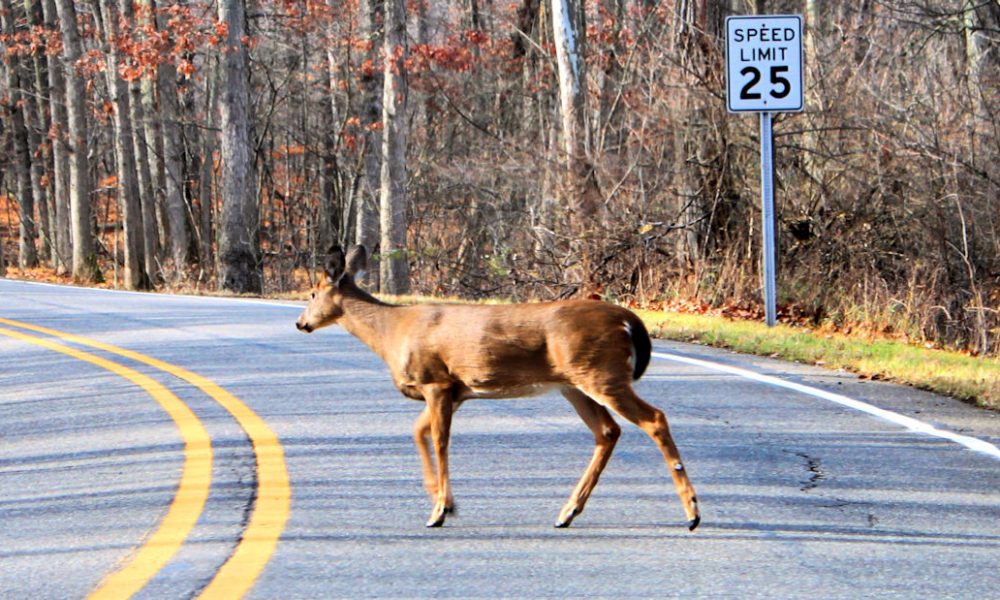Based upon their gentle personalities and plant-based eating habits, deer are generally not perceived as a threatening type of animal. However, Zietchick Research Institute wants to make us aware that deer are actually one of the most dangerous mammals to mankind. The reason for this is that deer frequently dart in front of cars, causing numerous crashes; many of these are associated with serious injury or fatality to the driver or passengers. According to Michigan State Police, about 50,000 automobile accidents are caused by deer each year in Michigan. The number of deer-related car crashes in West Virginia and Pennsylvania far exceeds this number. All in all, over 1 million vehicular accidents can be attributed to deer each year. Though these accidents occur throughout the year, they are particularly prevalent during the Late Autumn/Early Winter months of October, November and December. This problem is not limited to the United States. At least some type of deer is found on almost all continents (except for Antarctica and Australia).
Perhaps, we can understand why deer dart in front of cars by better understanding how they see. Dr. Movsas, an ophthalmologist and director of the Zietchick Research Institute, explains that because the eyes of deer are located on each side of the head, they have a very wide field of view. However, she notes, that this is at the expense of depth perception. Because our eyes are both located on the face and coordinate with one another, our sense of 3 dimensional space is much better than theirs. That said, the horizontal shape of their pupil along with their inner sense to align their heads (nose up or nose down) with the horizontal landscape, allows them to partially compensate for this. If this was not the case, they would be bumping into trees all the time. But perhaps, their lack of depth perception partially explains why they run into oncoming traffic, without realizing how close they are to the vehicles approaching them.
Important to know is that deer have superior night vision. Their eyes have two anatomical adaptations to account for this. First of all, they have a much greater density of rod photoreceptors, the cells in the retina that allow vision under low light conditions. The increased number of rods makes their eyes most sensitive to shades of blue (and less able to see red). Secondly, like cats, deer have a tapetum lucidum, a type of retroreflector in the retina that functions to intensify light that enters the eye. Because of their excellent night vision, these mammals are very active at dawn and at dusk, which is when the majority of car accidents with deer occur. Therefore, Zietchick Research Institute suggests that drivers should keep on high alert for deer when driving during these times of day.
Your first instinct may be to honk the horn and to flash your headlights if you see a deer in front of you. But, these measures are not known to be effective against preventing deer-related accidents. Zietchick Research Institute has learned that most serious accidents happen when drivers swerve to avoid a deer and instead crash into another vehicle, a tree or a pole. If a deer hops in front of your car, officials recommend braking firmly and holding on to the steering wheel to bring the car to a controlled stop. Of course, always wear a seat belt as your first line defense against bodily injury in the event that a crash does occur.
Reference:
https://ecosystems.psu.edu/research/projects/deer/news/2015/the-eyes-have-it










